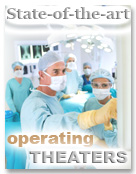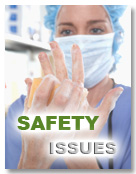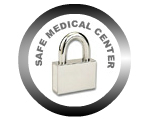
- RP Specialized in:
- Plastic Surgery in Argentina
- Treatments
- Breast Implant Surgery
- Rhinoplasty
- Vaser® Lipo System
- Liposuction
- Eyelid Surgery
- Tummy Tuck
- Breast Lift
- Facelift
- Lifting the Tip of the Nose
- Breast Reduction
- Double Chin Surgery
- Eye Shaping Surgery
- Chin Augmentation
- Ear Surgery
- Mentoplasty
- Eyebrow Lift
- Mini Facelift
- Cantopexy
- Deep Chemical Peel - Resurfacing
- Plastic Surgery Information
- Plastic Surgery Costs
- Cosmetic Procedures
- Hair Transplant
- Dermatology
- Phlebology
- Related information
- Related Links
- Web Directories
- Free Quotation
- Webmaster
» Breast Implants - Argentina Plastic surgery

Table of Contents:
- » Breast Augmentation in Argentina Photos Before and After: 1 - 2 - 3 - 4
- » General Information: risks, anesthesia, recovery, pre-operative tests, etc.
- » Mom to be or newly mom ?
- » How to get a quote - Photographs necessary - Requirements.
» General Information: risks, anesthesia, recovery, pre-operative tests:
What is Breast Implant Surgery?
» Privilege safety issues over cost savings. Your health comes first.
Go for quality.
Our operating theaters are part of high-tech private hospitals.
It is a surgical procedure we usually perform on both first-time patients and on people who have been victims of surgical malpractice, in which cases we correct mammoplasty errors. We practice this kind of surgery by applying local anesthesia with sedation, as general anesthesia is not necessary.
This surgical procedure consists in placing a breast implant or prosthesis behind the existing gland. The breast implant can be positioned either behind the mammary gland itself and in front of the pectoral muscle or behind the pectoral muscle. Prostheses will be introduced by means of an incision under the breast, in the nipple or in the armpits. The Physician will evaluate the pros and cons of each technique and will explain which technique they believe to be the most appropriate for each particular patient. It is a simple procedure which poses no inconveniences, and a decision may be made during your first consultation.
It is essential that patients be informed and advised so that end results are satisfactory, and look natural and pleasing. All fundamental factors to obtain desired results, including the choice of the type of prostheses, its placement and position, will be decided during the first consultation on the basis of a thorough assessment of each individual case.
Are there any risks? Which complications may arise?
All surgeries involve Risks:
By giving you all the information you need to make a decision, including information on the risks involved, we show our respect for you and allow you to have the last say in all matters concerning your surgery. We also believe that this speaks volumes about RP Medical Center, about who we are and how we work. It is our responsibility to provide you with all necessary information. We consider that Quality goes hand-in-hand with Responsibility. All patients have a right to be explained how the surgical procedure will be performed, together with the potential risks and complications (which are not caused by a Physician's errors or malpractice, but which derive from the surgery itself or cannot be anticipated), and the advantages and disadvantages of certain techniques, so that they can think it over and make a balance before making any final decision.
Any surgical procedure has risks (whether an optional surgery, which you choose to undergo, or an emergency surgery); some risks are common to all surgical procedures and others are specific to each type of surgery. No surgery is exempt from risk. A plastic surgery is, after all, a surgery. Risks (each under different incidence percentages; see below) range from post-surgery complications which can be secondarily solved (bad scarring, seroma, skin necrosis, etc.) to severe and fatal complications such as reactions to anesthesia, pulmonary embolism (blood clots or "small blood balls" which could migrate to the heart and block the pulmonary artery causing severe injuries or even death), among others.
In 1997, the results of a survey were disclosed in the United States, based on 400,675 surgical procedures involving Plastic Surgery and Surgical Repair, where 7 deaths were found. The rate of severe complications (hypotension, hematoma, infection, hypertension episodes, sepsis) was 0.47% (1 case every 230 patients). One death occurred every 57,000 patients, that is, a mortality rate of 0.0017%; slightly less than 1 death every 57,000 patients. The survey documented the approximate safety level for plastic surgeries conducted by certified plastic surgeons in authorized facilities in the US, during those years. Another survey conducted in the United States (from 1994 through 1998) further accounted for deaths occurred after Liposuctions. Survey findings reported one death every 5,000 patients, which represents a mortality rate of 0.02 % and 20 deaths every 100,000 liposuctions. The main cause of death was pulmonary thromboembolism.
The most common complication with respect to Breast Implant Surgery is capsular contraction, which takes place when the body wraps the prosthesis with a layer of connective tissue (capsule) and, although in most patients the capsule remains broad and thin-walled, in some patients it thickens and contracts, causing the breast to feel unnaturally firm and hard. There are different degrees of capsular contraction. Only the most severe cases require a second surgery to solve the problem. It is a complication whose ultimate cause is still unknown and which is present in about 10 % of the patients. Other possible local complications which usually have low incidence are: hematoma, infection, intolerance to suture, among others; these require an adequate treatment to be solved secondarily. Such complications are usually detected between the fifth and tenth day of the post-surgery period. Depending on each particular case, the treatment may consist of the administration of specific antibiotics to solve the problem or a new surgery to remove the prosthesis. At least one month must elapse before a new prosthesis can be implanted.
Risks must be minimized by taking all appropriate preventive measures and complying with certain rules and requirements, including the requirement for pre-surgery tests, pre-operative and post-operative indications, the practice of surgeries in the proper facilities (which must be fully-equipped to cope with any inconveniences), patients' full medical history, and their compliance with the Physicians' guidelines after the surgery. It should be recalled that complications and risks may arise even where all precautions were taken and even if the patient is healthy. Given that these complications are not predictable, they may affect the patients of even the best surgeons in any country of the world, despite any precautions taken to reduce potential risks.
What are prostheses like?
There are low, moderate and high profile breast implants. The shape of high profile implants is similar to a "grapefruit" or "balloon", while low profile implants are flat, like a "disc". Both implants are round-shaped. The most naturally-looking ones are moderate and low profile implants. The roundness, the breast contour, is highly noticeable in high profile implants and, therefore, they look more artificial, although some women like that.
There are also oval-shaped implants ("teardrop"). These are mostly used in skinny women with a small mammary gland to give them a more natural look. However, the problem is that if the implant rotates on its axis, its tip may be seen on the skin on the site. The above mentioned round-shaped implants do not cause that problem.
Noticeable results and a natural look are achieved by choosing the right size and profile of the implant. It is essential to discuss the desired results with the patients so that they can get what they were looking for. You and your doctor will evaluate together the most adequate implant for you.
We use high-quality imported prostheses and materials in all of our procedures. During your consultation, you will be able to see and touch the prostheses we use, and answer to all your questions.
The implants we use and why
For several years, we have been studying the quality of different brands of breast implants and the safety they afford. We use the Mentor and Eurosilicone brand implants because of their safety and high quality. Eurosilicone and Mentor brand implants, have the same useful life and provide great results and high safety standards. The final decision rests with you. We are here to assist you.
What kind of anesthesia we use
Breast implant surgery is performed under local anesthesia combined with a sedative or with general anesthesia. In both cases the patient does not feel anything.
What will scars be like?
Depending on their location, they are almost imperceptible after some time, although they can never disappear completely. The site of the incision will depend on the characteristics of each breast and on the implant to be inserted. The incision can be made under the armpit, around the areola or near the crease beneath your breast.
What is recovery like?
Recovery is quick. Generally, breasts remain sour for a few days. The sensitivity of areolas and other areas of the breast may become temporarily affected and the patient may experience hypersensitivity to direct contact in one or both breasts. These will subside and totally disappear after several days.
What precautions should I take after surgery? When can I go back to normal life?
After care
The patient should rest for 48 hours. Drains will be used, which are generally removed within the first two days. On days 2 and 3 the patient can start walking, but keeping her arms still. During the first 10 post-surgery days the patient should avoid long walks or outings, lifting weights or making strenuous movements with her arms. Dr. Del Rosso carries out every post-operative control in person. Stitches are removed on the 10th day. Hyper- or hypo-sensitivity of nipples may occur over the first months. Breast swelling is expected to recede in 3 to 5 weeks. Pink scarring will be noticeable for at least 6 weeks and may remain visible for up to the first months, and will start to become less visible after several months. They will never disappear completely, though. In this period, it is important not to expose scars to sunlight, which causes dark spotting, thus turning scars completely visible. Routine mammograms should be taken after breast augmentation, taking into consideration that the technician should use a special technique to obtain reliable images.
Patients can be back to work and normal activity 6-7 days after the operation, depending on the kind of work and demands. However, breasts will continue to be sensitive for 2 to 3 weeks. Special care should be taken as to lifting weights and making certain movements for 20-30 days.
» IN PLASTIC SURGERY, EXPERIENCE COUNTS...
What happens during breast-feeding?
Nothing out of the ordinary. Contrary to the general belief of many women, breast augmentation does not interfere with breast-feeding, although breasts are likely to increase in size during pregnancy.
How long should I wait to undergo a breast implant surgery if I have recently gave birth to a baby or if I breastfed or I am currently breast feeding?
You should wait at least 6 months from the last time you breastfed or 6 months from the date of birth if you did not breastfeed your baby.
If I do not live in the City of Buenos Aires: How long should I stay approximately?
You will need to stay in Buenos Aires for 10 nights, and 11 days. If you agree to have the sutures removed by a trusted physician in your city of residence, the total stay will be of about 9 days, as long as you recover normally during the post-operative period. Some stitches are removed between the 5th and 7th day following the operation. The remaining ones will be removed on the 10th day.
Which are the required pre-surgical tests?
It is necessary to undergo the following pre-surgical tests within 1 month before the date of surgery:
- Blood test: hemogram, blood sugar, creatinin, hepatogram, clotting time, serology HIV.
- Cardiology: ECG and surgical risk.
- Bilateral Mammogram and Breast Ultrasound (to rule out any breast pathology).
Mandatory pre-surgical instructions:
- Put off smoking 1 month in advance (all smoking patients have an increased risk of skin suffering in the area being operated on and of a delayed healing of scars).
- Discontinue Aspirin intake (Acetyl salicylic acid) 1 month in advance.
- Discontinue Vitamin E intake 1 month in advance.
- Apply anti tetanus vaccine.
- Anticoagulated Patients: Consult your hematologist to change treatment schedule.
» Privilege good results over cost savings.
Go for quality.
» How to get a quote – Photographs necessary to undergo a surgery – Stay – Requirements:
To request the right quote and provide all necessary information, go to: "How to travel to undergo a surgery", and read "Step No. 1", "Make arrangements for a surgery by following these easy steps."
Photographs required to undergo a Breast Implant Surgery: 3 photographs showing the whole area from your navel up to your neck: 1 frontal photograph, 1 profile photograph and 1 3/4 profile photograph.
Stay required in the case of Breast Implant Surgery: 10 nights, 11 days. For further information on stay days, minimum stay, and schedule, among other matters, go to "How to travel to undergo a surgery" , read "Step No. 3", " Make arrangements for a surgery by following these easy steps."
Hospitalization: Not required. After the surgery, a 4-hour recovery period at the clinic is required. You may then move to your place of accommodation.
Why are photographs necessary?
Not only are photographs necessary to avoid paying for an unnecessary and more expensive surgical procedure, but also to determine whether the surgery for which you have come to us is the best type of surgery for you. Photographs are essential for our Physicians to analyze your case, to know how to proceed and offer you the personalized treatment that sets us apart. Your photographs also enable us to make a more precise quote.









